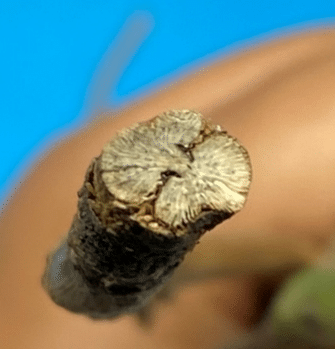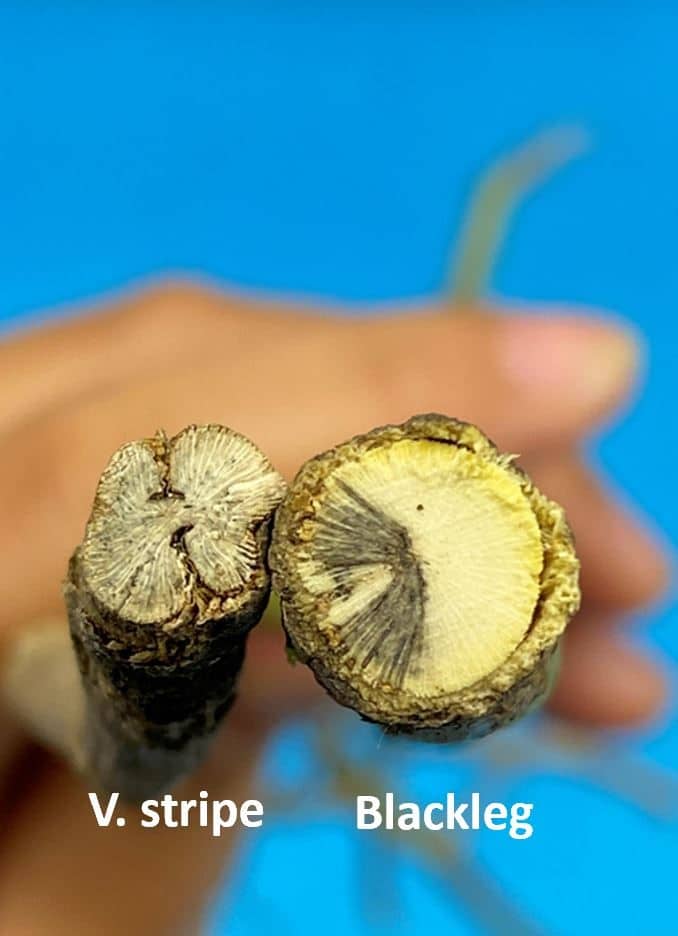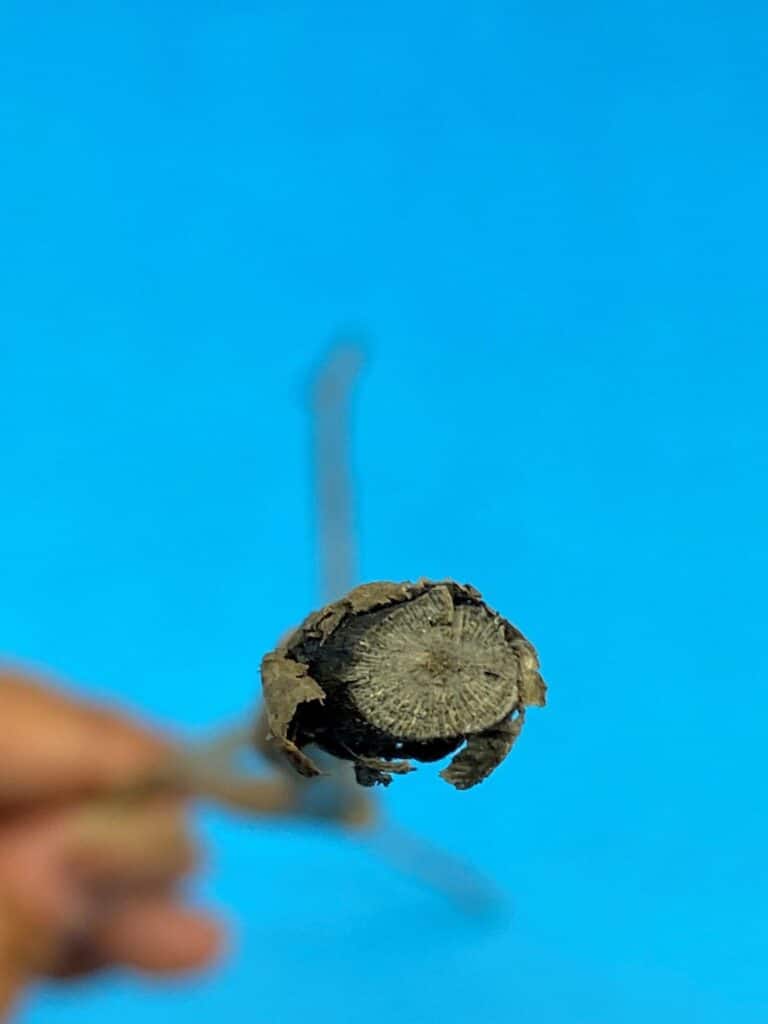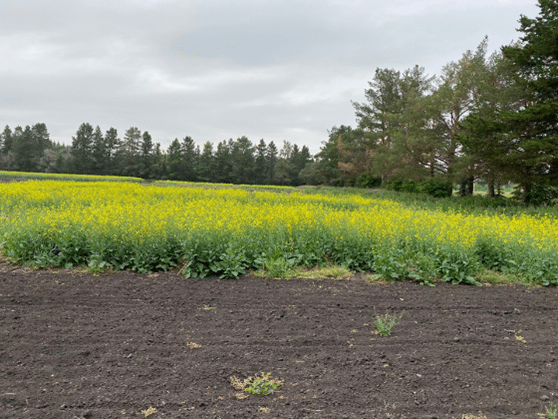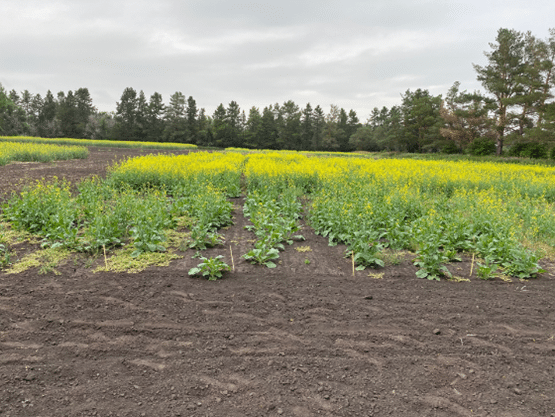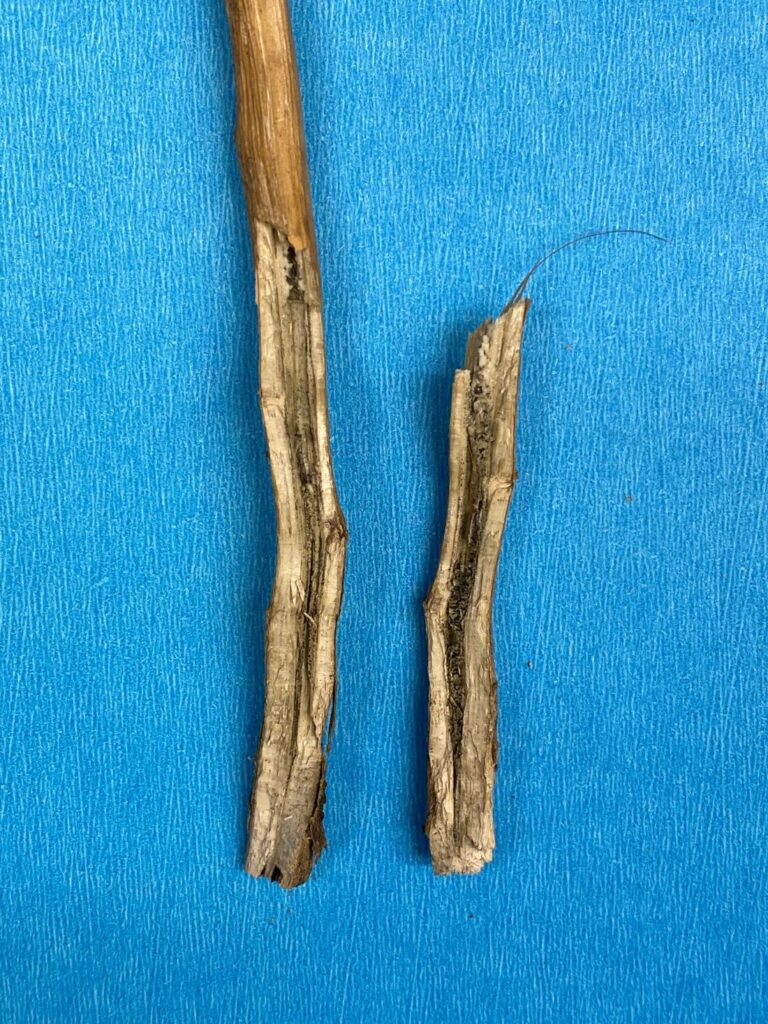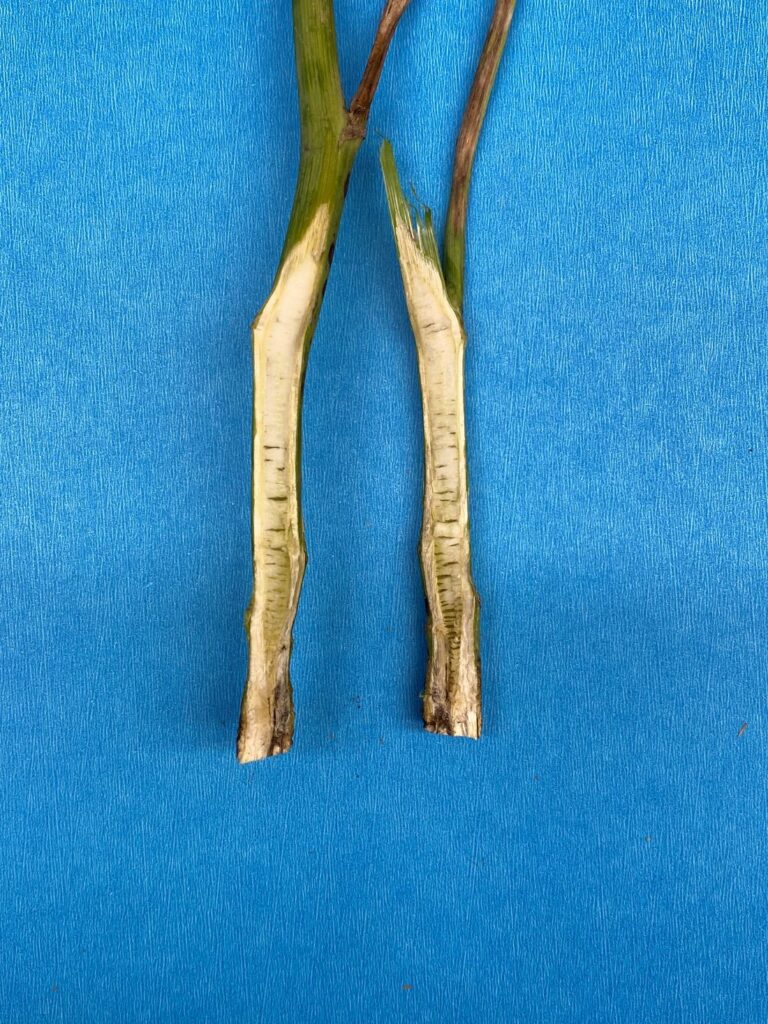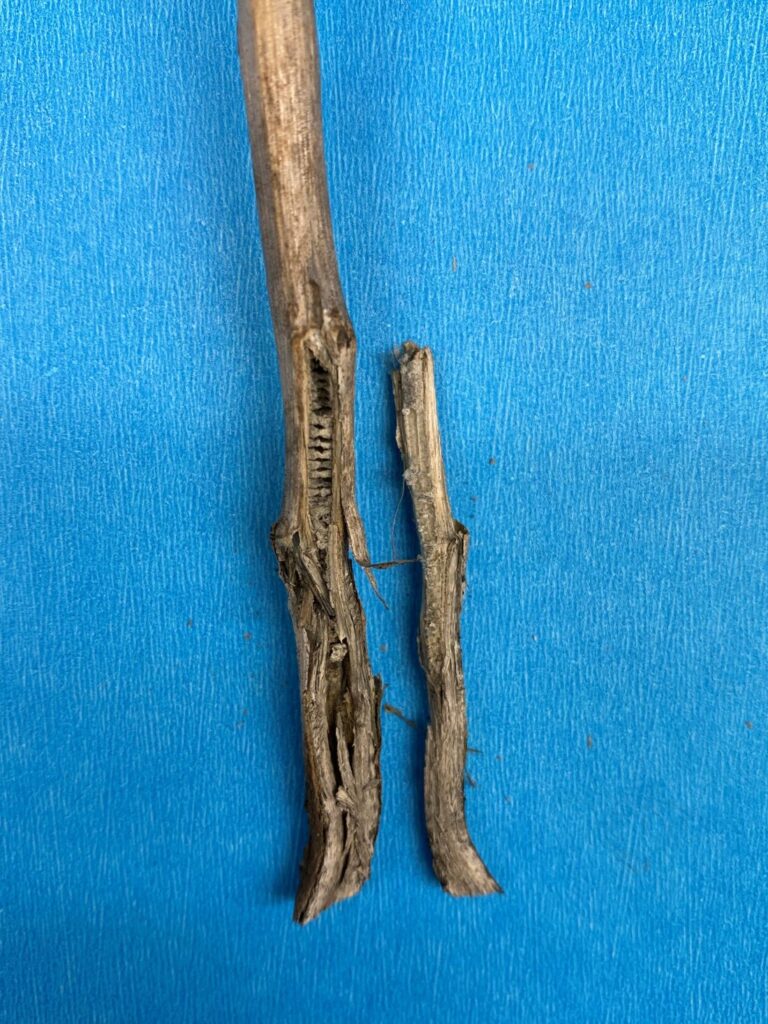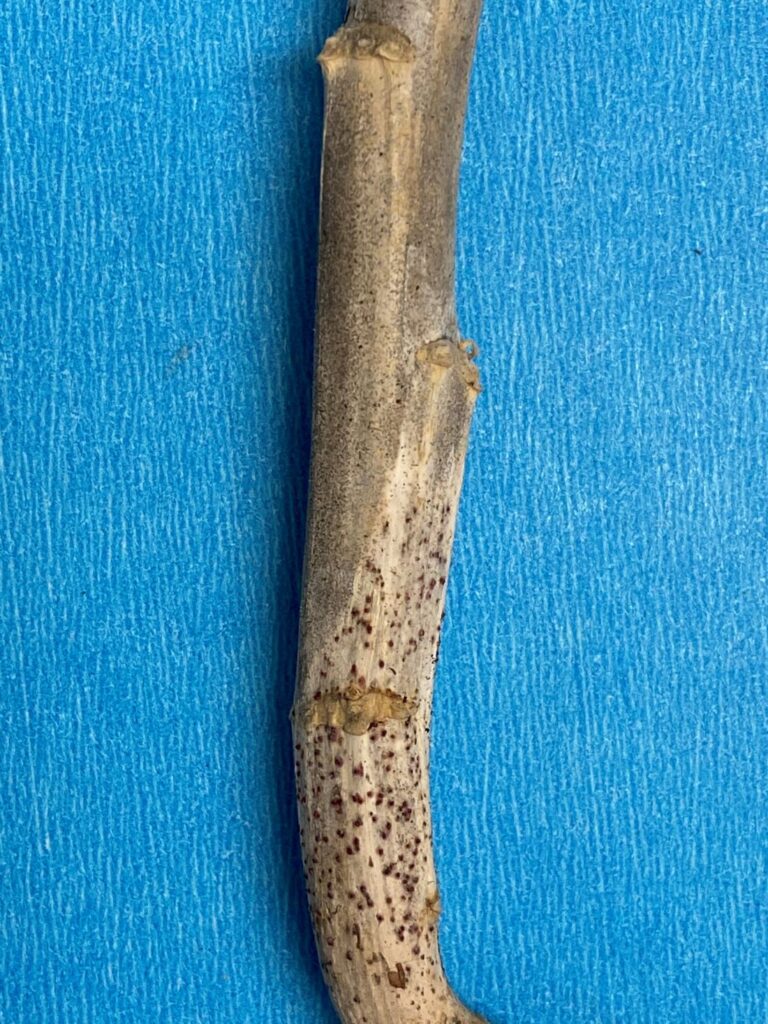Key Result
Verticillium stripe affects seedling establishment and crop growth before affecting tissues in the stem to reduce yield. Seedling and adult stage disease look different and new disease assessment scales were developed for both. This will be necessary for determining host resistance. Extra measures may also be needed to control blackleg where verticillium stripe is present.
Project Summary
Background
Verticillium stripe, caused by the fungus Verticillium longisporum, was first found in canola in Canada in 2014. A subsequent survey in 2015 revealed that this disease is present in all provinces from Quebec to British Columbia, including all the Prairie Provinces. While it is present and has been studied as “verticillium wilt” in Europe, there isn’t much known about this disease in Canada.
Since V. longisporum infection results in several disease symptoms in canola (such as leaf chlorosis, lodging, and premature ripening), may cause yield loss and its microsclerotia can persist in the soil and spread on farm equipment, further examination of this disease is needed.
Purpose
This project is designed to mitigate the threat posed by verticillium stripe to sustainable canola production by measuring yield loss, investigating disease development, evaluating canola genotypes for resistance to verticillium stripe and determining the interacting effects of verticillium stripe and blackleg.
An evaluation of yield losses associated with verticillium stripe will be important to help farmers and industry predict the impact of this disease and determine whether or not control measures are warranted. Secondly, improved inoculation techniques will facilitate further research into verticillium stripe, allowing researchers to evaluate control measures more efficiently and to more effectively screen genetic material for resistance to the pathogen. Knowledge of the resistance of canola cultivars to this disease will help identify potential management strategies, including an assessment of genetic resistance as a potential management tool.
Methods
Yield losses were measured by growing plants in micro-plots inoculated at different densities where yield losses were measured on a per-plant basis, and by growing plants in 6m x 1.5m field plots harvested by small-plot combine. Disease was initiated in lab and greenhouse by root-dip method, while in the field, by sowing seed with grain inoculum. Greenhouse experiments were used to determine interactions between blackleg and verticillium stripe.
In 2020, weather conditions were moister than average in the early growing season and resulted in good disease development in field experiments.
In 2021, precipitation was well below average in June and July and resulted in much lower disease development, however yield losses still occurred.
Results
- Infection of canola by verticillium stripe in the early stages inhibits crop establishment and growth. Later infection leads to deterioration of the stem and vascular tissues.
- Yield is more adversely affected as the infections become more severe but yield losses can occur under dry conditions with few symptoms.
- Plants that were inoculated three weeks after seeding using the root-dip method developed the most severe symptoms. Refined methods for the inoculation of V. longisporum on canola are important tools for screening germplasm and evaluating resistance phenotypes.
- Symptom severity appeared different at seedling and adult plant stages, and infection at both stages affected yield. Accurate assessment of symptom severity will assist at identifying disease resistance. This information will facilitate further research into breeding for resistance to verticillium stripe.
- Infection with verticillium stripe exacerbated the severity of blackleg in canola crops. Extra measures may be needed to control blackleg where verticillium stripe is present.
Conclusions
Soil inoculum of Verticillium longisporum inhibited canola emergence and growth before affecting tissues in the stem to reduce yield. Yield losses increased with disease severity, and occurred without obvious symptoms under low moisture.
Seedling and adult stage disease look different and new disease assessment scales were developed for both. This will be necessary for determining host resistance.
Extra measures may be needed to control blackleg where verticillium stripe is present, since infection with verticillium stripe worsened blackleg infections in canola.
